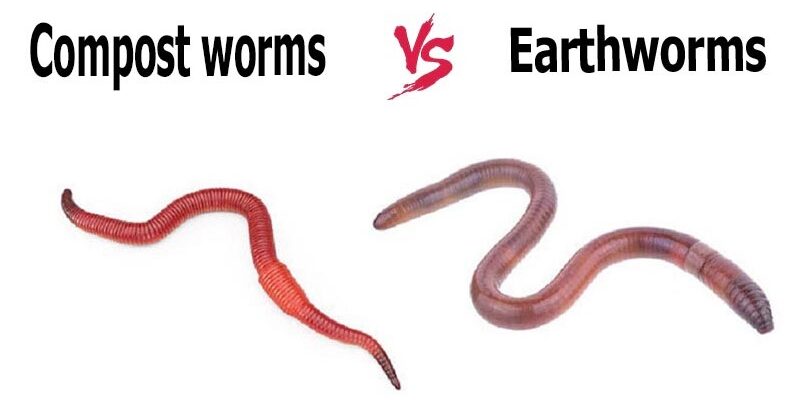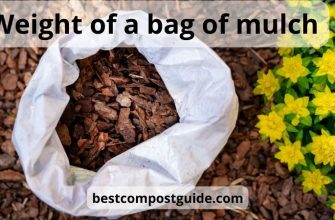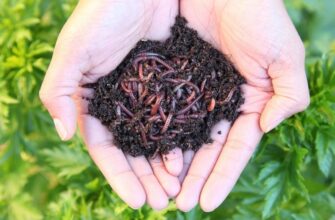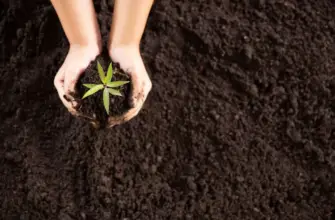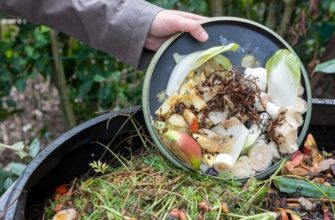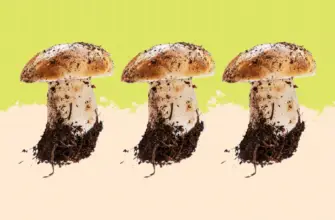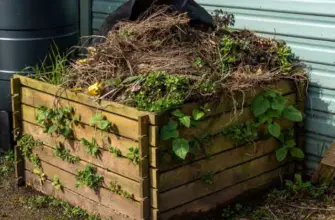Worms appear the most efficient workers in the garden. They spend sleepless nights providing us with the high-yielding crop. The presence of so many worms in the garden bed helps a gardener succeed in plant care and crop harvesting.
A worm can also be a great composter. Vermicomposting is a very popular engagement nowadays, which helps reduce a great amount of kitchen trash, recycling it into valuable soil materials.

- What is the difference between composting worms and garden worms?
- The necessity of adding composting worms
- Compost worms
- Red wiggler worms
- How to get composting worms
- Common earthworms
- How to get earthworms for the garden
- Can earthworms and compost worms live together?
- Are all worms compost worms?
- How many red wigglers are required for a compost bin?
- Should I add earthworms to my compost bin?
- Can compost worms live in the garden?
- Can a worm bite?
- How does an earthworm improve soil structure?
- How does an earthworm improve drainage?
- How do earthworms improve nutrient availability?
- What is common between a compost worm and an earthworm?
- Conclusion
What is the difference between composting worms and garden worms?
A garden’s health much depends on worms. Garden worms keep the soil healthy and help the plant roots grow.
Both compost and garden worms increase the health and productivity of a garden, improving the quality of feeding plants.
Red wrigglers, being social worms, form large populations and reproduce more worms than common earthworms.
Most gardeners have to choose between compost worms and earthworms. Compost worms or red wiggler worms are used for composting. Earthworms are best at draining and aerating the soil, burrowing deep into the ground.
A compost worm increases the nutritional value of the soil. A worm brings air, water, and nutrients into the ground.

The necessity of adding composting worms
It is not always required to add worms to make good compost. Worms may find a way to enter your compost bin. Composting may start even without worms.
But red worms can significantly encourage the process of composting.
Compost worms
These worms can recycle kitchen scraps and food waste, as well as other organic waste, into valuable soil nutrients.
Compost worms live in the upper layers of the soil.
They can tolerate higher temperatures than earthworms. So, this kind of worm is an excellent addition to a compost pile.

Red wiggler worms
The segmented worms can look like earthworms, but they are reddish-purple and smaller.
Res wiggler is a type of composting worm. They live in large groups close to the surface.
It is not necessary to turn the compost since a red wiggler eats the organic material from the top and then spread it throughout the worm bin.

How to get composting worms
Red wigglers and other types of composting worms are available at most gardening stores. They can also be found in the upper layers of the ground near the surface.
There is also an option to order red worms online.
Common earthworms
Earth worms often appear after a rainstorm. To get oxygen, earthworm species use skin, so they have to come to the surface to breathe when their tunnels are filled with water. It is also easier for them to find each other for mating when they come out to the surface.
Earthworms can move much faster along moist soil, and cover longer distances when it rains. These worms are reddish-brown worms also known as nightcrawlers. These worms prefer a higher carbon-to-nitrogen ratio. One can also find this type of worm in bait shops.
Most of the earthworm species dig deeper to eat dirt. After eating, earthworms leave fertile castings which feed plants.
One can find worms in most gardens and lawns.
Earthworms eat both small microorganisms and organic matter. Their excrements contain potassium, phosphorous, and nitrogen, which help plants grow.
Earthworms improve drainage, allowing water and air to get to the plant’s roots.
Due to the burrowing work of the worms, plant roots can deeper penetrate the soil and get access to more feeding resources.

How to get earthworms for the garden
Most garden and fishing stores put up common earthworms for sale. Some types of earthworms are widely available since they are used as fishing bait.
Can earthworms and compost worms live together?
Different types of worms perform different kinds of work. Worms of both types live in different areas of the soil, and they do not compete for resources.
Earthworms feed deep underground, whereas compost worms stay closer to the surface.
Thus, both types can easily live together and there can be no battle called “compost worms vs. earthworms”.
Are all worms compost worms?
Red wigglers and earthworms are invaluable for all gardeners, but only red wigglers can be used in a compost pile. But before one starts making composting, it is important to choose the right worm.
Their feeding habits are different. A red wiggler worm eats rotting vegetation and organic materials. An earthworm eats composted soil deep underground.
When using red wigglers for a composting bin, you can simply gather all the kitchen scraps and other organic matter, and put it right on the surface for red wigglers to eat.
Earthworms will pitifully die of hunger and heat in a compost bin.
Compost piles often get very hot due to breaking down food scraps by all those organisms. In this case, an earthworm will try to get away from the hot compost pile and hurt itself. Or it will burrow deep and crash against the bottom of the compost pile.
Red wigglers feel in the heat fine and keep on producing usable compost. Earthworms can be ideally used for outdoor gardens and flower beds.

How many red wigglers are required for a compost bin?
The number of the required red wigglers depends on the bin size. The amount of food waste meant for composting should also be considered. The food is eaten quickly. Red worms can eat half of their weight in food. So, half of a body weight of a red wiggler can be composted each day.
One can measure the daily amount of food remains the family produces, to estimate the quantity of all the worms required.
Should I add earthworms to my compost bin?
A compost worm is heat tolerant. It likes to live in warm environments, unlike earthworms. Common earthworms will try to find cooler places and burrow deep into the ground.
A red wiggler worm can withstand higher temperatures than earthworms, but it is recommended to use a cold composting technique before you put worms into the bin.

Can compost worms live in the garden?
Red wigglers are surface dwellers, and they can also live in the garden soil.
As opposed to earthworms, red wigglers carry their food onto the surface, and they are more aggressive in feeding habits.
Can a worm bite?
A worm does not have teeth in its mouth. It is safe to handle worms.
How does an earthworm improve soil structure?
The casts of the worm stick soil particles together, which prevents moisture from getting out.

How does an earthworm improve drainage?
Before farmers start sowing seeds, they plow the soil to let water and air reach the roots of the plants.
Worms can work as small plows in the garden soil. They make channels to aerate and water the soil so that cropper roots could penetrate much deeper.
How do earthworms improve nutrient availability?
The casting of an earthworm is rich in minerals and serves as a good fertilizer. It helps plants grow faster.
What is common between a compost worm and an earthworm?
Both types of worms are tube-shaped and segmented worms. They have a closed circulatory system and a hydrostatic skeleton.
Both species have lighter-colored bands that contain the worms’ reproductive organs.
For reproduction purposes, two worms join their clitella. They both have a central nervous system and a peripheral nervous system.
Both types of worms eat dead organic matter.

Conclusion
Thus, the difference between compost worms vs. earthworms is evident.
Castings of earthworms and red wigglers can be added directly to flower beds and the soil.
Each time one starts with vermicomposting, it is important to choose the right types of red wigglers.
It is a big mistake to use worms taken from the garden for vermicomposting. They will die in a few days on the bottom of the bin.
Yard waste and kitchen scraps are valuable sources for getting red wigglers castings right in one’s home.
Worm compost is a valuable addition to garden beds and soil. Watering plants with worm compost tea is a great thing with significant results.
Red wrigglers reproduce very quickly and are available in the local nursery.
Only different types of healthy worms working together can result in a thriving garden.
Proper vermicomposting results in high-yielding crops and brings healthy plant-based products to your kitchen table.

